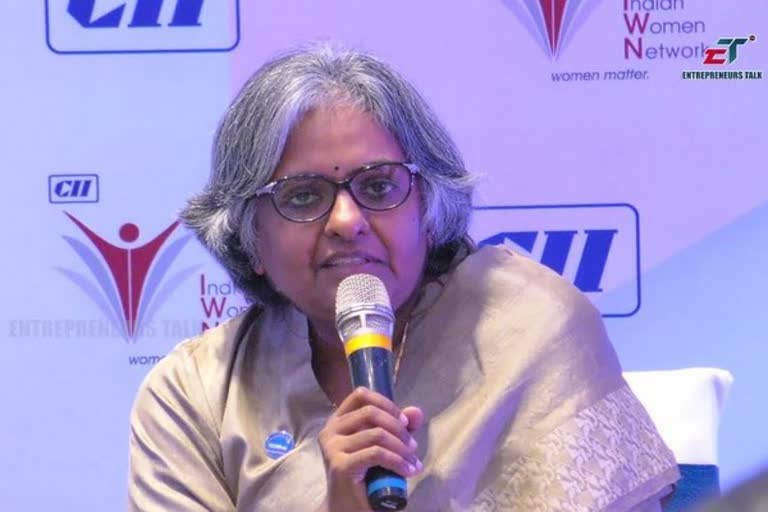New Delhi: As expected, the spending pattern of Indian consumers changed significantly during the early days of Covid-19 lockdown when money was spent on essentials like grocery and medicines. Now, the consumer spending has come back to 80-90% of pre-Covid level as the government eased restrictions in recent months but unlike earlier Indian consumers are spending more on those things and services that will help them mitigate the risk of virus, says a top banker.
In March this year, Prime Minister Narendra Modi announced a complete nationwide lockdown to contain the community spread of the SARS-CoV-2 virus what has been described as one of the most stringent lockdowns anywhere in the world. It brought down the economic activity to a grinding halt; except a few sectors, most of the people were confined to their residences.
It completely changed the spending behaviour of Indian consumers, particularly the middle class as people tend to preserve cash due to economic uncertainty.
“During the early days of lockdown we noticed that consumer spending came down and it was on groceries, medicines and some other limited purpose usage,” said Shalini Warrier, Executive Director of Federal Bank.
Warrier, who also heads the retail business of the bank, says consumer spending has gone up in the last three months as the government relaxed the lockdown restrictions.
“As the economy started opening up we have seen the spending volume has gone up. In fact, the industry as a whole has achieved 80-90% volume compared to January spending for credit card, debit card spending which is a good indicator of how the market is moving,” Shalini Warrier told the audience in the Business and Banking dialogue organised by Mumbai based payment services and ATM management firm EPS India.
In response to a question by ETV Bharat, Warrier said though the spending has come back to near pre-Covid level but there is a difference in how the money is being spent.
“Travel, hotel and hospitality are much lower, very little in fact, they have been taken over by some other essentials, some stuff that people need for their houses,” Shalini Warrier noted.
Read more: Interest waiver: Outstanding as of Feb 29 to be reference for ex gratia relief
Covid forced people to buy personal vehicles
Shalini Warrier, who keenly watches the spending pattern of her bank’s customers by using data analytics and artificial intelligence, says people are spending money on those things that will help them avoid risks associated with the Covid-19.
“We have also noticed the tendency among the buyers to reach out and buy smaller end vehicles like small cars, used cars, two wheelers. We have seen some uptick in that. I think that is because of the general risk involved in public transport, so that the risk is mitigated,” Warrier told ETV Bharat.
There are two reasons behind the increased purchase of personal vehicles even if it meant buying an used car or a two-wheeler. First, the services of public transport like metro and urban trains, and bus service operations were severely hit due to lockdown restrictions.
Second, people still consider it unsafe to travel with others in public transport due to highly contagious nature of Covid-19 virus which has killed over 1,20,000 people in the country and over 1.17 million people worldwide.
Festive season impact
Indian consumers are spending heavily with the onset of festival season, which begins in October with the start of Navratri (festival of nine nights) and lasts till March next year.
A large number of Indians spend money on buying new vehicles, houses, precious metals such as gold and silver, jewellery, and clothing and host of other things as this period is considered auspicious time for such purchases and investments.
“As we are heading into festival season, we all are expecting an uptick in demand. We all have seen e-commerce players like Amazon and Flipkart have done very good sales on appliances, mobile phones et cetera,” added the banker.
PMI data confirms economic revival
Finance Minister Nirmala Sitharaman Tuesday said that demand for consumer goods has picked up during the festival season which would help revive the economy.
Addressing a programme organised by London based financial service provider IHS Markit, Sitharaman said the recent uptick in the demand could negate the massive contraction of nearly 24% in the country’s GDP during the first quarter of the current fiscal.
According to the data compiled by IHS Markit’s Purchasing Managers’ Index (PMI), India’s factory output expanded at the fastest pace in over 8 years in September this year.
London based IHS Markit Group compiles monthly factory output data of 40 major economies in the world by surveying the top executives of big companies. IHS Markit’s PMI data is considered a crucial indicator of the health of a country’s economy.
“Things are looking much better now,” said Shalini Warrier.
(Article by Krishnanand Tripathi)



